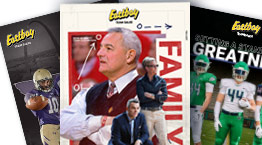|
|
Baseball & Softball Sizing Help, Tips & Information
Proper Fit (Shoes) Toe Area: Allow room for toes to move comfortably while standing up straight. Width Area: Foot is supposed to fit comfortably without stretching the upper over the midsole of the shoe. Heel Area: Try for a snug fit as heel counter area is less padded and more firm. Choosing the Right Cleat Molded rubber cleats: that have wide studs with deep grooves offer a safe choice when it comes to baseball footwear. Most youth leagues and certain adult organizations require the softer rubber bottoms. Molded TPU cleats: feature a varying number of hard plastic studs in brand-specific configurations. TPU weighs less than rubber and offers a metal-cleat "feel" without the danger of spikes. Metal cleats: have bladed studs that are usually wide and thin with rounded edges. The studs are pointed at different directions on the outsole to deliver multidirectional traction specific to baseball movements. Turf shoes:, also called trainers, have rubber bottoms with shallow patterns or little nubs. They are ideal for training, batting practice, fielding drills and play on hard turf. Interchageable cleats: are ideal for players who only want one shoe to play on different surfaces or in different leagues. They include a complete set of metal and TPU cleats and a wrench. Choosing the Right Bat To find the right size bat for you, find your height in the chart below. Then find the column with your weight and move across the chart until you come to the header containing your weight. This meeting point, in inches, indicates the best bat length for you.
Choosing the Right Fielding Glove (General Guide) Baseball Youth: Infield 10"-11.5", Outfield 11"-12" High School / Adult: Infield and Pitchers 11"-12.25", Outfield 12"-13" Fastpitch High School / Adult: Infield 11.5"-12.5", Outfield 12.5"-13" Slowpitch Infield 12"-13", Outfield 12.5"-15" | |||||||||||||||||||||||||||||||||||||||||||||||||||||||||||||||||||||||||||||||||||||||||||||||||||||||||||||||||||||||||||||||||||||||||||||||||||||||||||||||||||||||||||||||||||||||||||||




